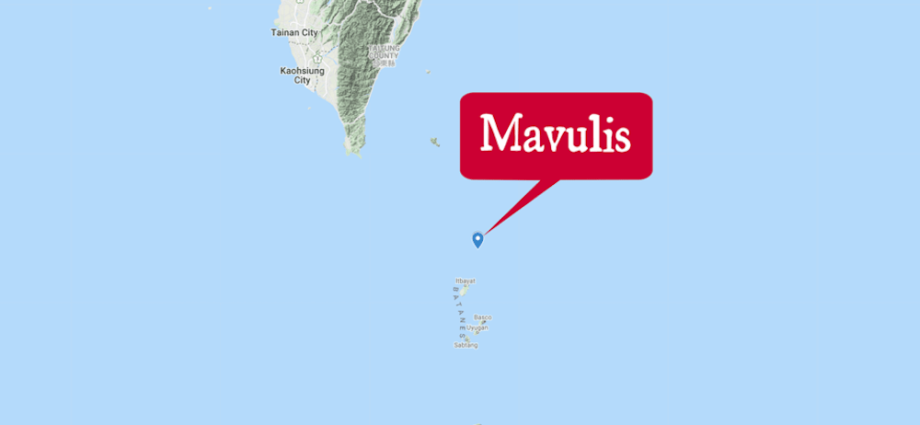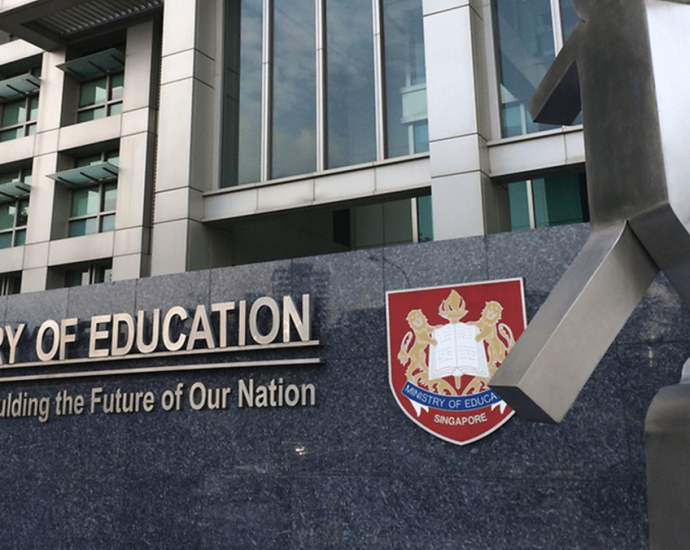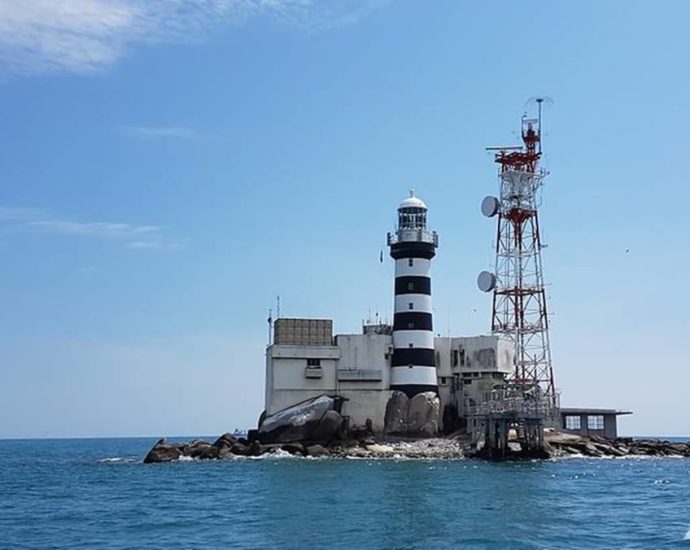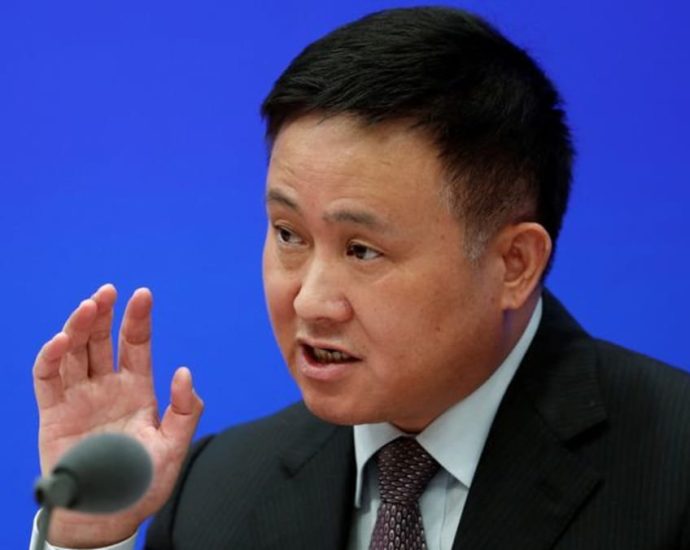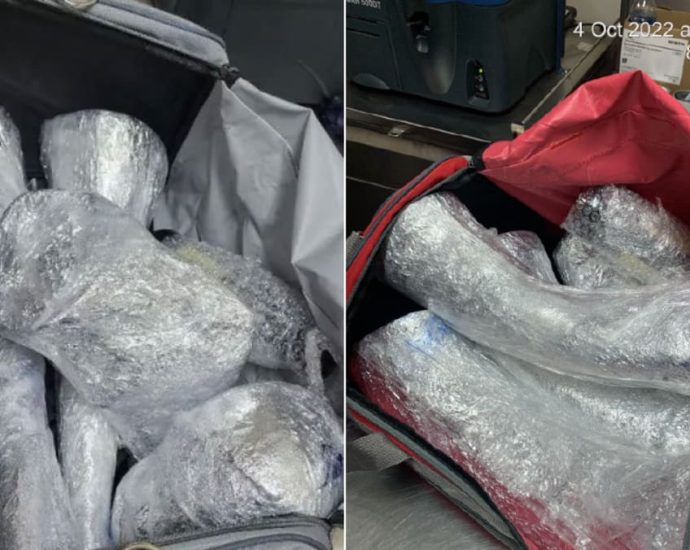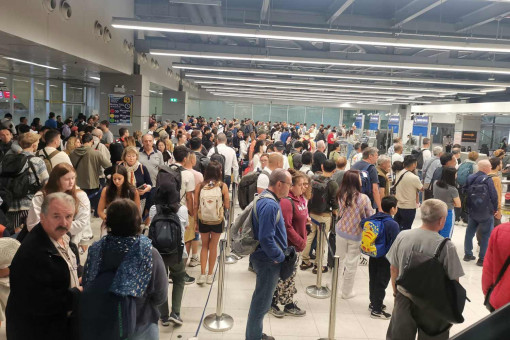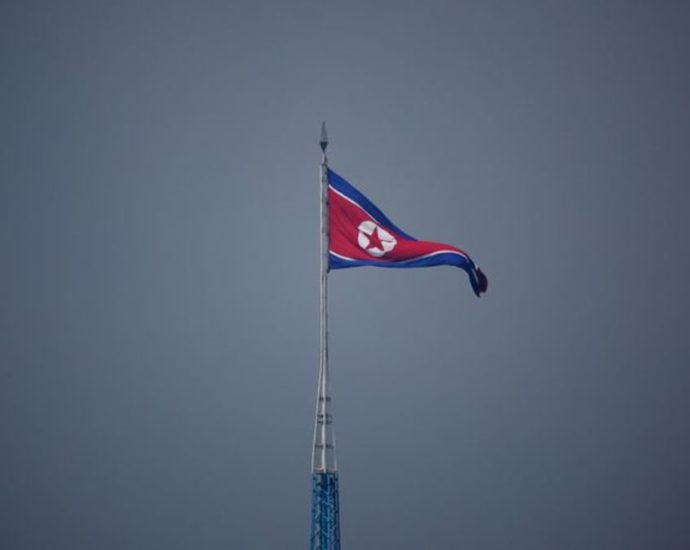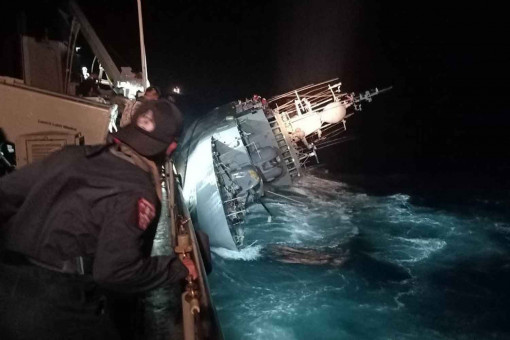Fret not Taiwan, Marcos Jr has your back – Asia Times
MANILA – Soon after Lai Ching-te won Taiwan’s January 13 presidential election, Philippine President Ferdinand Marcos Jr made an unprecedented congratulatory call to the independence-leaning new leader who’s firmly in Beijing’s crosshairs.
According to official reports of the conversation, Marcos Jr congratulated Lai as “Taiwan’s next president” while looking forward to “close collaboration, strengthening mutual interests and fostering peace and ensuring prosperity for our peoples.”
The Philippine Department of Foreign Affairs was quick to clarify that Manila still abides by the “One China” policy. The Malacanang Palace followed suit by playing down Marcos Jr’s felicitations.
Beijing fired back nonetheless by summoning the Philippines’ top envoy in Beijing while warning Manila “not to play with fire” amid festering maritime disputes in the nearby South China Sea and China’s calls to “reunify” Taiwan with the mainland, by force if necessary.
Far from a diplomatic faux pas, however, the Filipino president’s statement was a well-calculated move. For Marcos Jr, as a nearby neighbor of Taiwan and US mutual defense treaty ally, the Philippines must participate in any collective effort to deter a Chinese invasion of the self-ruling island.
How the Philippine leader calibrates its cooperation with the US and its like-minded allies vis-à-vis Taiwan could make the difference between war and peace in the months and years ahead.
That includes regarding the amount and terms of access Manila allows the US to its northernmost military bases that abut on Taiwan’s southern shores.
It’s still unclear how China will respond to Lai’s democratic victory. Beijing clearly favored the Kuomintang’s Hou Yu-in, who finished second in the vote ahead of third-placing Ko Wen-je (26.5%) of the upstart Taiwan People’s Party (TPP).

After the polls, China’s Foreign Ministry said that “Taiwan is China’s Taiwan” and thus nothing can “change the basic pattern and the development of cross-Strait relations, nor can it change the common desire of compatriots on both sides of the Taiwan Strait to draw closer.”
With China facing deepening economic troubles at home and possible instability inside the ruling Communist Party amid recent top-level purges, including at the foreign and defense ministries, there is arguably growing pressure on Xi Jinping’s regime to project strength and resolve overseas.
Authoritative studies show that the influential and sizeable Chinese urban elite and middle classes tend to favor a more muscular approach to intractable issues such as cross-strait relations and eventual “reunification” with Taiwan.
There is little indication so far that Beijing is either willing to restore cross-straits communications channels or roll back its increasingly regularized and often large military drills around Taiwan.
For his part, Lai has promised to avoid any escalatory move in favor of a “balanced” approach that “maintains the cross-strait status quo.”
Yet, he has also vowed “to safeguard Taiwan from continuing threats and intimidation from China” and continue his predecessor’s (Tsai Ing-wen’s) proactive diplomacy by building a wide network of alliances with like-minded democracies, including the US, Japan and increasingly the Philippines.
With the vast majority of the Taiwanese population self-identifying as primarily “Taiwanese”, even a discussion of “reunification” with Beijing has increasingly become a political taboo on the island.
Thus even if both Beijing and Taipei have no interest in direct conflict, they could sleepwalk into one as an increasingly fragile status quo withers and shakes.
The upshot is a growing sense of urgency among immediate neighbors like the Philippines to prepare for conflict contingencies in the near future.
Indeed, the Taiwan question is more urgent than ever for the Philippines. For starters, there are as 200,000 overseas Filipino workers residing on the self-ruling island.
Any conflict would be a humanitarian and likely economic catastrophe for the Philippine government – far worse than when the Arab uprisings that rocked Middle East nations with large Filipino diasporas.
Geography is key to Manila’s strategic calculation. Marcos Jr. himself hails from the northwestern province of Ilocos Norte, which is around 45 minutes away by flight from Taiwan’s major southern cities. Several Philippine islands are less than 100 kilometers away from Taiwanese territories.
The Marcos Jr administration has already granted the US access to several military facilities in the northern provinces of Cagayan and Isabela under the expanded Enhanced Defense Cooperation Agreement (EDCA).

There are suspicions Washington aims to directly incorporate the Philippines into its Taiwan defense strategy. Indeed, the Pentagon is reportedly contemplating making the Philippines into a massive weapon depot for a potential war with China over Taiwan.
Some have even suggested the possibility of Taiwanese assets, including fighter jets, relocating to the northern Philippines in the event of total war.
So far, Manila has hedged its bets. On one hand, the Philippine military indicated that it will allow the new EDCA bases in the north to be “made available during emergency situations for combined use of the US and the AFP (Armed Forces of the Philippines).”
Marcos Jr has also indicated that those facilities “will also prove to be useful for us should that terrible occurrence (China’s full-scale invasion of Taiwan) come about.”
After all, as the Filipino president admitted, it is “hard to imagine’’ the Philippines could remain neutral in the event of a war for Taiwan, which is far closer to Manila than any major Southeast Asian capital.
At the same time, Marcos Jr has also maintained that an expanded US military presence in northern Philippine provinces will not be directed at China per se, but rather aims to enhance the Southeast Asian nation’s capacity to deal with a range of threats, including non-traditional security issues such as disaster-relief and humanitarian operations.
Indications suggest Marcos Jr is still hedging his bets in pursuit of a “goldilocks” approach to both superpowers, one that enhances the Philippines’ strategic position with American help while avoiding escalation with China that could tilt toward conflict.
By expanding communication channels with Taipei, the Philippines may actually enhance its ability to quietly and more effectively mediate between China and Taiwan – or, at the very least, seek reassurance of statesmanship from both sides as a concerned neighbor.
The Philippines will need to tread very carefully in calibrating its Taiwan policy, particularly on the defense front. Under EDCA, the Pentagon is barred from building permanent and autonomously-governed bases on Philippine soil as during the Cold War era and thus must move troops and equipment on a rotational basis.
This means that the Marcos Jr administration has the prerogative to determine the size of the American troop presence and nature of their weapons systems in EDCA-designated facilities.
Most EDCA facilities in the northern Philippines are relatively skeletal structures, unlike the massive American-controlled bases in Subic and Clark in the 20th century.

The Philippines will also need to carefully assess Pentagon requests for access to even more military facilities. The most crucial ones regarding Taiwan are in the northernmost Batanes islands, most notably on Mavulis Island, which hosts a naval facility.
In exchange for a potentially limited American presence in the north, the Marcos Jr administration could press China to rein in its aggression around Philippine-controlled areas in the South China Sea, most notably at the Second Thomas Shoal where the two sides have clashed in recent months.
Taiwan has presented neighboring countries such as the Philippines a major geopolitical challenge, one that requires delicate balancing between the US and China, but also an opportunity to reset the regional balance of power more in its favor.
Follow Richard Javad Heydarian on X at @Richeydarian
Deadline for poly foundation programme responses extended after students report login issues

SINGAPORE: The Ministry of Education (MOE) on Wednesday (Jan 24) said it will extend by one working day the deadline for students to accept, reject or submit an appeal over their polytechnic foundation programme (PFP) posting results, after many were unable to access the portal on release day.
This is a one-year programme to better prepare polytechnic-bound Normal (Academic) students for entry into the relevant polytechnic diploma courses.
Results for the programme postings were released at 2pm on Tuesday, but many students reported they were unable to access the PFP admissions exercise portal.
A thread posted on the Reddit community r/SGExams showed several comments from those who could not access their results.
“I don’t want to be waiting anxiously for my results while the ‘504 Gateway Timeout’ (error) is adding salt to the wound,” wrote the original poster, who goes by the username yeet123moi.
“It’s been an hour I still can’t get it,” one commenter said.
Another guessed that “everyone is logging in so the website is crashing”.
Others suggested that they should look at the previous year’s cut-off points to determine their chances of getting into their preferred course.
“Why can’t they just send us an auto-generated email about our posting results,” one commenter said.
In response to CNA’s query, an MOE spokesperson said students were unable to access the portal due to technical issues.
“While the administrative team was working to bring the portal back up, all students were informed of the outcome of their PFP applications via email by 8.20pm on Jan 23.”
The spokesman added that the portal had resumed normal operations from 9.45pm on the same day, and students were updated via email.
“Students have been informed that the deadline to (a) accept their offer, (b) reject their offer, or (c) submit an appeal on the portal has been extended by one working day from 4pm on Jan 26 to 4pm on Jan 29.
“Students who have submitted their appeals through the portal will be able to check their results on the same portal at 2pm on Feb 2.”
Malaysia to launch inquiry into cases involving disputed Singapore Strait islets
KUALA LUMPUR: Malaysia will set up a royal commission of inquiry to study the handling of cases involving three disputed islets in the Singapore Strait, the Cabinet said on Wednesday (Jan 24). Prime Minister Anwar Ibrahim had previously called for a review of a 2018 decision by Malaysia – underContinue Reading
China to cut amount banks hold in reserve to boost lending
The latest decision is “another step in the right direction, but monetary policy by itself is not enough to boost economic momentum”, Zhiwei Zhang, president and chief economist at Pinpoint Asset Management, told AFP. “A more proactive fiscal stance focusing on consumption is more important and effective,” said Zhang. “TheContinue Reading
Sunwayâs 42 Iskandar Puteri campus opens applications for free coding bootcampsÂ
Designed to develop skills necessary for a career in tech
42 Iskandar Puteri is the second campus in the 42 Malaysia network
Sunway’s 42 Iskandar Puteri (42IP) invites all Malaysians interested in learning coding to join a free 26-day coding bootcamp by playing a fun logic game on their new website.
Situated in Sunway…Continue Reading
South African man admits to role in Singapore’s largest seizure of rhino horns after airport scan picks up clues

DNA analysis by NParks’ experts confirmed that all 20 horns were genuine, from white rhinos and black rhinos.
The two species come under Appendix I of the Convention on International Trade in Endangered Species of Wild Fauna and Flora (CITES), which lists the most endangered species.
International trade in those species is prohibited.
Samples of the horns were sent to the University of Pretoria in South Africa where expert DNA analysis determined that the horns came from 15 southern white rhinos and one black rhino.
Some samples were linked to 11 female rhinos, and the reproduction of such species could have been halted as a result of possible illegal poaching, court documents stated.
Investigations revealed that Jaycee had purchased the horns from illegal poachers in South Africa and arranged to sell them to a person known as “Jimmy” for delivery in Laos.
SINGAPORE’S LARGEST SEIZURE OF RHINO HORNS
Deputy public prosecutors Eric Hu, Ng Shao Yan and Lee Da Zhuan sought three years and one month’s jail for Gumede.
They noted that this is the largest seizure of rhino horns in Singapore to date, adding that illegal trade in wildlife species is one of the biggest threats to the survival of many endangered species.
“The more endangered a species, the more coveted it is by traders and collectors,” they said. “This leads to more illegal wildlife trading – which in turn results in a vicious cycle that could eventually result in a species’ extinction.”
The prosecution said that illegal wildlife trade, if left unchecked, will damage Singapore’s standing as a financial hub and preferred centre of commerce.
Singapore airports handle more than 30 million passengers annually, with the sheer volume of passenger traffic rendering Singapore vulnerable to exploitation as a conduit for animal smuggling, said the prosecutors.
“There is a need to prevent mislabels of Singapore being a transhipment hub for illegal wildlife,” they said.
“For the present case, the detection and seizure of the rhinoceros’ horns was only possible due to the vigilance of the officers at the checkpoints.”
The prosecution added that Gumede’s acts have “contributed to the further decimation of the rhinoceros population”.
There are currently fewer than 5,000 black rhinos in the wild, said the prosecutors, with the sharp decline largely due to poaching for rhino horns believed to be a cure-all for many ailments in traditional Chinese medicine.
In Vietnam, the rhinoceros horn is rumoured to cure cancer and is highly sought after by the more affluent community, said the prosecution.
Gumede has been remanded since October 2022.
He was previously acquitted of a third charge of entering into a criminal arrangement regarding the horns after the judge found that an element of the charge had not been made out by the prosecution.
Gumede, who is represented by Ms Stephania Wong from Rajah & Tann, is set to be sentenced on Jan 26.
For bringing in endangered species without the required permits, he could be jailed for up to two years per charge, fined up to S$50,000 per species, or both.
Mongolia: Six dead after liquified natural gas tanker crashes
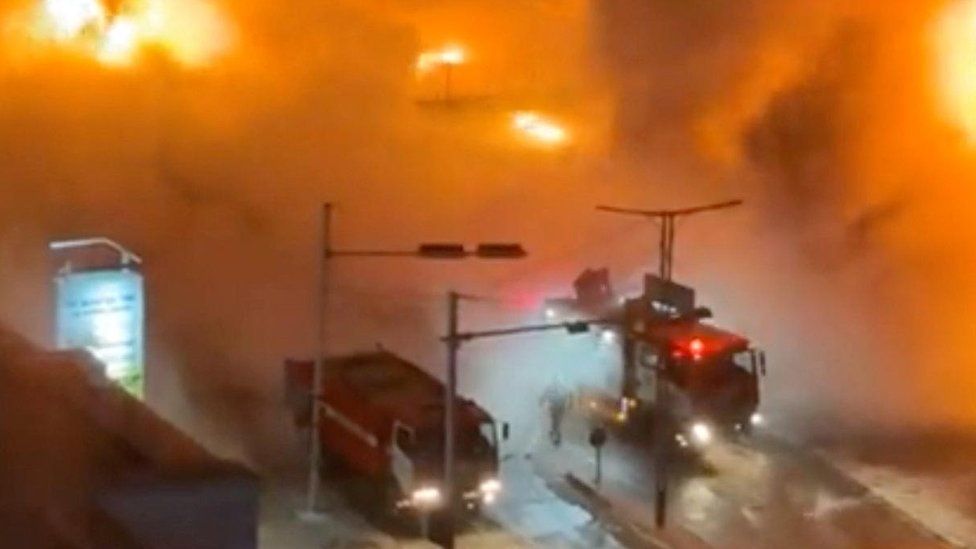 Reuters
ReutersSix people have died – including three firefighters – after a truck carrying 60 tons of liquefied natural gas crashed and exploded in the Mongolian capital.
Hundreds of firefighters had been sent to battle the blaze following the collision with a car in Ulaanbaatar on Wednesday morning, officials said.
At least 11 people were injured, with the fire spreading to nearby buildings.
One local resident described how he initially thought a plane had crashed.
Erdenebold Sukhbaatar, a 40-year-old lawyer, told Reuters news agency the crash, which took place just after 01:00 local time (17:00 GMT on Tuesday), had felt like an earthquake, but was followed by a bright light.
“It was very strong. And then I’ve never seen such kind of, like, strong [explosion]. It was like 60, you know, tons, which means 60,000, litres [of gas] you know. It was like huge liquid gas.”
He watched the ensuing fire spread to “almost three different buildings”, climbing at speed.
One resident told Reuters that by the time they realised their building was alight, their front door had already been engulfed in flames, forcing them to break out of the back door. When they looked back, the fire had reached the top floor of the building.
“It all happened very quickly,” they said.
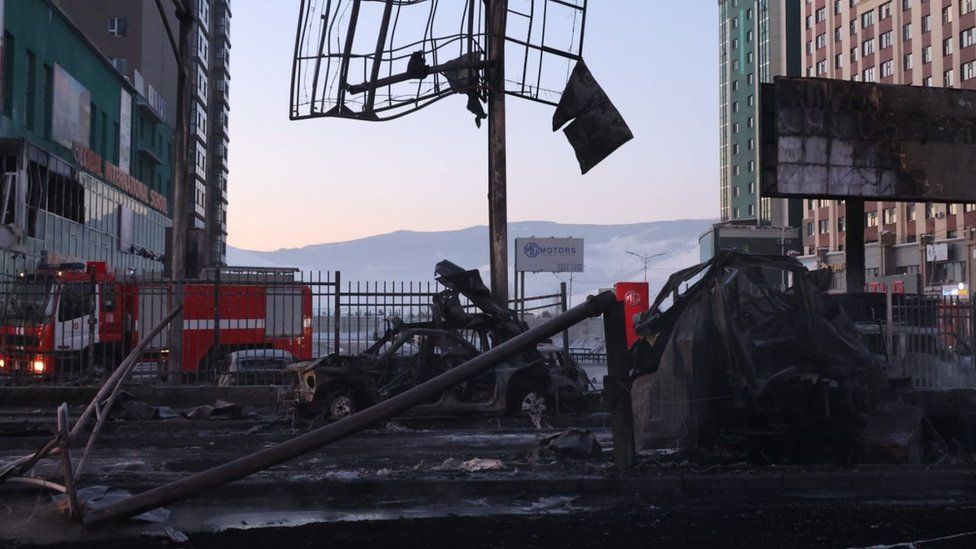
Another described how the force of the explosion had not only blown out their windows, but also destroyed their balcony.
According to Sainbuyan Amarsaikhan, Mongolia’s deputy prime minister, no casualties had been reported from inside any of the buildings.
However, he revealed the firefighters died in a second explosion, which threw part of the truck “with a lot of force”, resulting in the “tragic loss” of life.
The Mongolian National Emergency Management Agency (NEMA) – which said the fire was put out by 04:30 – added that four children were among the injured, including one who was being treated for poisoning.
Questions are now being asked about why a tank carrying such a dangerous load had been allowed to travel into the residential neighbourhood, containing many schools.
“You know, if it happened [in] the daylight time, especially during the rush hours in the morning or in the evening, [it would] be more harmful,” Erdenebold Sukhbaatar pointed out.
“This shows city planning is really bad,” Ankhbayar Galbadrakh told AFP news agency. “All of these trucks – with gas or without gas – should travel outside of the city limit.”
Related Topics
-
-
4 September 2023
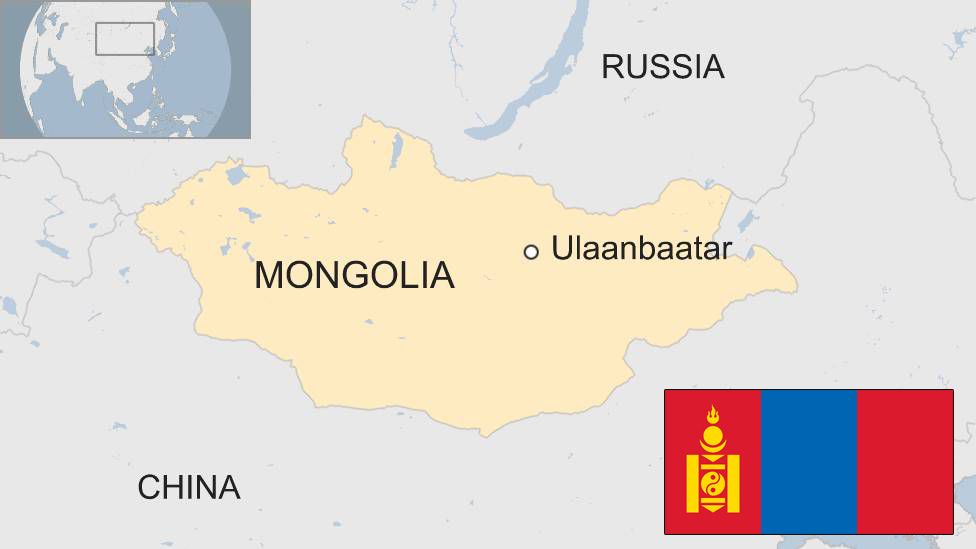
-
Airport chaos as passenger checkout system fails
PUBLISHED : 24 Jan 2024 at 16:33

Long queues formed at Suvarnabhumi airport on Wednesday morning after the biometric blacklist system used by the Immigration Bureau broke down.
Pol Maj Gen Choengron Rimpadee said the probklem began at 4.30am, when the biometric blacklist system malfunctioned. This meant a process that normally took 45 seconds took more than one minute. The automatic passport check channels at the airport also stalled, adding to the problem.
The congestion mainly affected outbound travellers. Queues built up, stretching back to the luggage examination areas, Pol Maj Gen Choengron said.
Immigration officers had to check all travellers through manually and use the Advance Passenger Processing System (APPS) at Suvarnabhumi airport to assist them with the checks.
After talks with the biometric system vendor, the service was restored about 1.30pm.
North Korea’s AI development raises concerns, report says
SEOUL: North Korea is developing artificial intelligence (AI) and machine learning for everything from how to respond to COVID-19 and safeguard nuclear reactors to wargaming simulations and government surveillance, according to a new study. International sanctions imposed over its nuclear weapons program may have hindered North Korea’s attempts to secureContinue Reading
Navy cancels winning bid for salvage of HTMS Sukhothai
RTN heeds US warning on future sales of military equipment
PUBLISHED : 24 Jan 2024 at 16:22

The Royal Thai Navy has cancelled the awarding of a tender to a firm using equipment from China to salvage of the US-built corvette HTMS Sukhothai, and agreed to abide by its agreement with the US.
RTN chief Adm Adung Phan-iam had ordered the bidding result be scrapped, according to an informed navy source.
A company with the Thai initial “Nor” had won the bidding, with a quote of 199 million baht. Adm Adung cancelled ti when he learned that the winner could not itself salvage the entire warship, the source said
An addition, the Joint United States Military Advisory Group Thailand (Jusmagthai) had sent two letters of warning to the RTN over the salvage of the corvette, in January last year and again in December.
Jugmag, which oversees US military affairs in Thailand, first contacted the navy a month after the Sukhothai sank on Dec 18, 2022, seeking information about plans to recover the ship, which had entered service in 1987. The US wanted to know which firm would carry out the salvage operation, since the Sukhothai came under the US Foreign Military Sales Act, was equipped with advanced weapons systems and subject to end-use monitoring.
It was reported the winning bidder planned to use equipment from a Chinese firm to salvage the warship.
When the US became aware of the matter, it had asked the navy to abide by its agreement with Washington. It warned that failure to do so could affect future military sales to Thailand.
Adm Adung had reported the matter to the Chief of Defence Forces, Gen Songwit Noonpackdee. It was subsequently agreed the navy would abide by the agreement. The navy then cancelled the bidding result, and would call fresh tenders for the salvage, the source said.
The new selection process would take several months and the salvage operation, earlier set for April this year, would be delayed.
HTMS Sukhothai sank in a storm in the Gulf of Thailand on Dec 18, 2022.Twenty-four of the 106 personnel on board drowned and five others remain missing, presumed dead.

